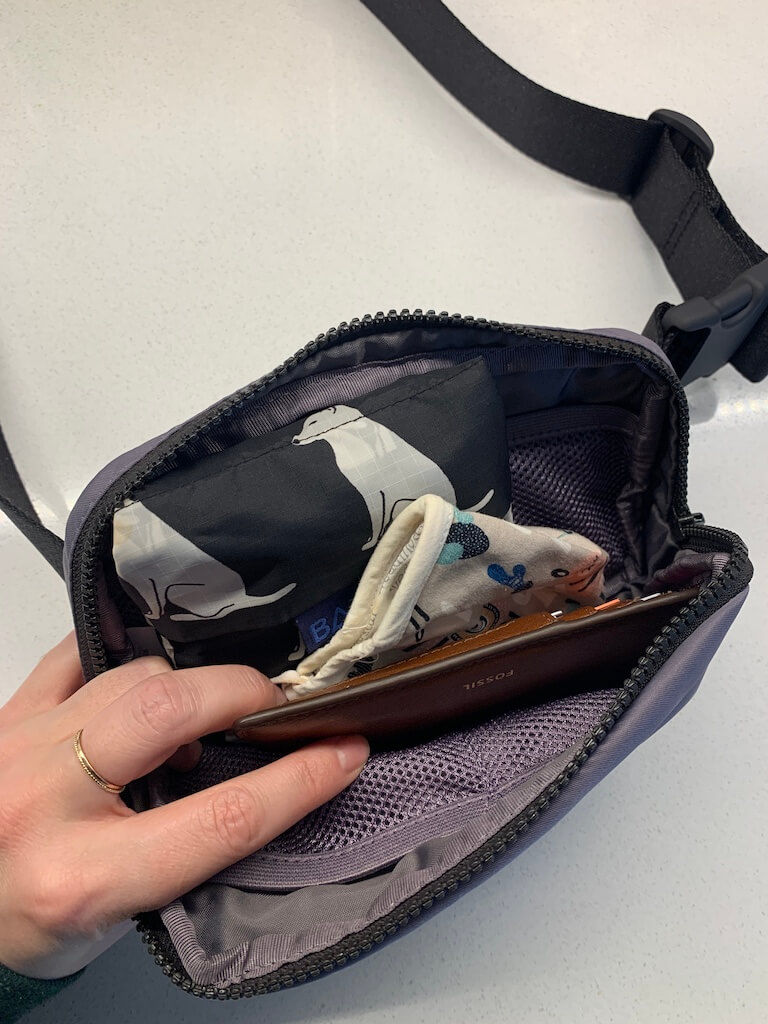8 Best Fanny Packs For Travel
A fanny pack just might be the ultimate travel accessory. Here are 8 awesome styles you’re sure to love.
This post may contain affiliate links. Read my Disclosure & Privacy policies for more detail.
If you’re looking for a practical travel accessory to carry around all your things while traveling then look no further than a travel fanny pack.
You may be thinking you read that wrong, but hear me out! I’ve become a huge fan of fanny packs – also called belt bags or waist pouches – over the last few years and they’ve come back in style.
They really come in handy in destinations like Mexico where you want to keep your valuables close and preferably in front of you to protect yourself from theft.
Since I love mine so much, I thought I’d put together a round-up of the best fanny packs for travel to help you find your own!
The Best Travel Belt Bags & Fanny Packs
I highly recommend adding a belt bag to your travel gear collection. There are styles out there to suit everyone, whether you’re looking for something sporty, chic, or somewhere in between. Here are a few promising options to get you started.


Top Pick: Everywhere Belt Bag from Lululemon
I have this fanny pack and personally love it! It looks great worn around the waist or over the shoulder and the adjustable strap is long enough to fit either way.
There is plenty of room for your wallet, phone, keys, plus a few other small items. And you don’t have to worry if it rains, the material is water repellent.
One of the best features of this bag is that there is an external zipper compartment on the side against your body where you can place extra money or items that are very important to you.
This is definitely my top pick as the best travel belt bag, as it’s just the right size to fit all the essentials.
The only potential downside to this belt bag is that the shoulder strap is quite wide. While this does help distribute the weight more evenly, it can also be kind of sweaty and cumbersome in hot weather.
Hiking Fanny Pack: Patagonia Ultralight Hip Pack
Patagonia is known to make quality products geared for the outdoors and the Ultralight Hip Pack is no exception. While this wouldn’t work on longer day hikes, it’s perfect for carrying your keys and phone on a short walk.
Pack a few bandaids and a paper map just in case too – they’ll definitely fit in this one-liter bag. It’s also made from 100% recycled material for the body fabric, lining, and webbing.
Like most Patagonia products, it comes in a few fun colors like Stellar Blue and Fresh Teal. The waist strap on this belt bag is much thinner than that of the Lululemon bag, making it a little less noticeable to wear.
Anti-Theft Travel Waist Pouch: Pacsafe
RFID Blocking and anti-theft measures make this a great option for anyone traveling internationally.
The adjustable waist strap is made of wire-reinforced Carrysafe Slashguard material and it fastens with a hidden buckle.
It only comes in one color but if you’re looking for a practical piece that won’t break the bank, this is one of the best travel fanny packs to choose.

City Wear: Herschel Supply Co.
Herschel always delivers on functionality and design. This travel waist pouch is 2 liters so will fit all the important items you need for the day and has just enough frills to make it a cute accessory.
Not to mention it comes in colors like Ash Rose or Woodland Camo in addition to the more muted colors.
This is the perfect option if you want something to wear for a day out on the town and a great fanny pack for travel when you want something more stylish.

Versatile: Everlane
If you specifically want a bag that looks great worn over the shoulder, then the Everlane ReNew Transit bag is the way to go.
There is a zipper on the outside plus a second one on the opposite side for more valuables. It’s one of the longer bags on the list at about 14in.
There are only two color options but the bag is made from 100% recycled polyester material. It’s great for travel days and to wear in crowded areas.
For The Heavy Packer: Baggu
This one may not be the most chic, but it’s relatively large and has two main compartments that will fit plenty of items for a day out. Perfect for beach days or when you need more packing room for a day exploring town.
It also comes in lots of great colors and some fun patterns with flowers and even one with a NASA theme.
It’s super functional and great for those who like an organized bag especially since there’s also an internal zippered compartment.

Durable Waist Pouch: Carhartt
This one can be carried as a small cross-body bag or a travel waist pouch and since it’s made by Carhartt it will last for ages!
The main compartment is zippered but it also has a protective flap that covers it and helps protect all your belongings from the rain as well.
For those who want a bag that looks a bit more like a small purse, this is the perfect fanny pack for travel.
Perfect for Theme Parks: Kavu
Fanny packs have really seen a come-back thanks to theme parks because they’re the only bags that you’re allowed to take on the roller coasters with you.
These Kavu bags are small but they have two zippered pockets to fit the essentials – phone, keys, and credit card. They work perfectly when you’re trying to fit under the harnesses on the major theme park rides. Whether you’re headed to Six Flags or XPLOR, this fanny pack will come in handy!
In true Kavu fashion, these bags come in over 20 different fun patterns so you’re sure to find one you like. Better yet, buy a few so you can wear them with different outfits.

Best Travel Fanny Pack FAQ
Is a fanny pack good for travel?
Fanny packs are a great solution for travelers who can pack light and want to keep their valuables close.
Once you try out a fanny pack for travel, you may not want to go back to a regular-sized purse. They’re so handy!
Are fanny packs in style right now?
Yes! They are making a huge come-back and trending for this year. Bags like the Herschel Waist Bag and the Everlane ReNew make this easy to add to any outfit.
Can you wear a fanny pack on a plane?
You can if you want that to be your personal item. You can also pack a fanny pack in your larger carry-on or personal item if you just want to use it at your destination. I shove mine inside my daypack when I board the plane.
Why wear a fanny pack?
They are practical, low-profile, and so convenient! Instead of having to keep up with a large purse and worry about someone snatching it, you can keep your belongings literally strapped to your body.
You can access any of your essentials quickly since they’re right there at your hip. The best travel fanny pack is also a great accessory.
If you’re not quite feeling a fanny pack, crossbody bags are a great alternative. You can hang them on the front of your body in crowded places to deter theft, and having the strap over your shoulder helps deter purse-snatchers. Check out my guide to anti-theft purses for a few recommendations!









